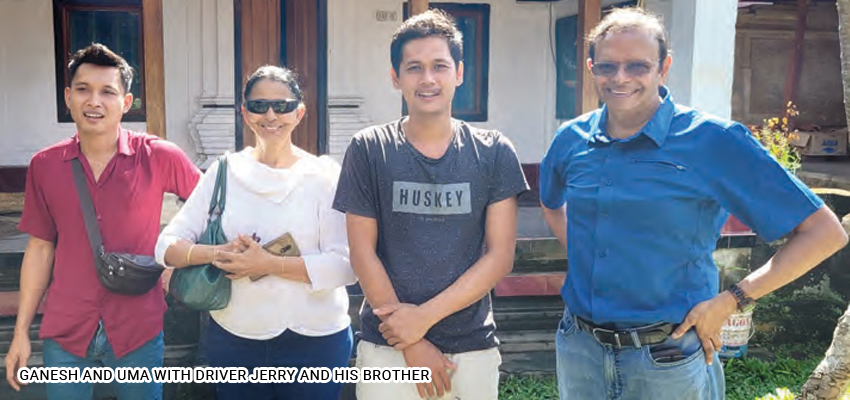Why do international tourists flock to a sleepy little island like Bali? What can India learn from it? An interesting take…
We had a hectic week of enjoying what Bangkok and Pattaya in Thailand and Bali and Nusa Penida in Indonesia had to offer at our group offsite and later on a private holiday. The last place to expect to be surprised would probably have been the more formal location of Nusa Dua where the Asian Venture Philanthropy Network hosted its first physical conclave in three years at the magnificent International Convention Center. Reaching late afternoon, we decided to make a quick dash to the Uluwatu temple to see the Indonesian version of Ramayana with Balinese chanting right through the performance. And that is where the epiphany occurred.
Here is a country recovering from Covid like all of us and here was an open-air amphitheatre at the edge of the Bali Sea brimming to its eight hundred tourist capacity for an innovative one-hour show. Thinking this must be a special occasion, we were surprised when we learnt that this was the audience response for two shows a day throughout the year. And this experience for us had been repeated there, evenings earlier, in Nusa Dua where a more local Indonesian show in a very informal courtyard of the local town hall had an equally packed tourist audience who stayed through despite intermittent rains.
What causes this amazing response from the international community to a sleepy little island like Bali? Three important aspects which most of our wannabe tourism locations in India can learn a lot from. The first, of course, is the packaging. Not just the shows and destinations are all made easy with multiple language translation, ample parking and adequate parking and washroom facilities at every destination. The second is the variety of experiences one can join with moderate travel. Just in Bali, we could see multiple local and Hindu temples, visit well-maintained parks and gardens, climb down to the enchanting Banyumala waterfall, enjoy beach facilities and superb views of the cliffs at Nusa Dua and even interact with monkeys at a specially designated park. And the third and possibly the most important is the extreme warmth and friendliness of the people who at no point made us suspect and attempt to cheat or make a fast buck. A case in point is our driver Samyak (aka Jerry) who spoke to us over four days about his life and hopes, took us home to introduce us to his brother and his fiancée and will probably be a welcome guest at our home someday soon. The first response my wife Uma and I had when we said goodbye to him and the magic of the island was “when can we be back again?”
Back home in India, we recall, often with some trepidation the month that our wonderful young Belgian friend, Sofie, spent with us after fishing college in Brussels. Left in our care by my Harvard classmate who thought her daughter would benefit from the India experience, we saw her go through multiple escapades of evading crazy traffic, dealing with atrocious toilets on major highways and almost being pushed and pulled by unruly folks on a South Indian beach on their keenness to get a photograph with a tall and gorgeous European blonde. Young Sofie was hardly fazed and insisted on calling herself Sofie Singh by the end of her trip, but for us, there was always an underlying tension to keep her safe and happy while she experienced our country.
In our keenness to showcase India to the world and indeed to our friends with a need to understand the diversity of our country, one of the first impact investments made by our company 5F World was in Live History Digital, created by TV veteran Mini Menon and her history buff partner Akshay. Our vision has been to showcase the history and culture of hundreds of Indian destinations and make it easy for people to think about India and where they could learn the most. While the venture has been successful, it is unfortunate that the packaging of these destinations by the local authorities still leaves a lot to be desired. With Metaverse making it possible to “experience” destinations in the best possible manner even before stepping on to a flight to get to the place, we have the opportunity to multiply our tourism numbers manifold but let us focus on some more facilities everywhere please and not just the well-travelled destinations in the Golden Triangle, Kerala and Goa.
A piece of trivia about Indonesia that we found quite intriguing was the similarity of names of many of the drivers, hotel staff and shop owners we encountered. When asked, the Indonesians happily reveal that the first child is named Wayan, the second Madde, the third Komak and the fourth Ketuk and with the fifth child, the name goes back to Wayan and so on. And if it’s a girl, the name is prefaced “Ni” and if it’s a boy, “E”. Simple, isn’t it? Though I do wonder that if my grandfather who had more than twelve children had been from Bali, would I have three aunts named Niwayan in my family?
